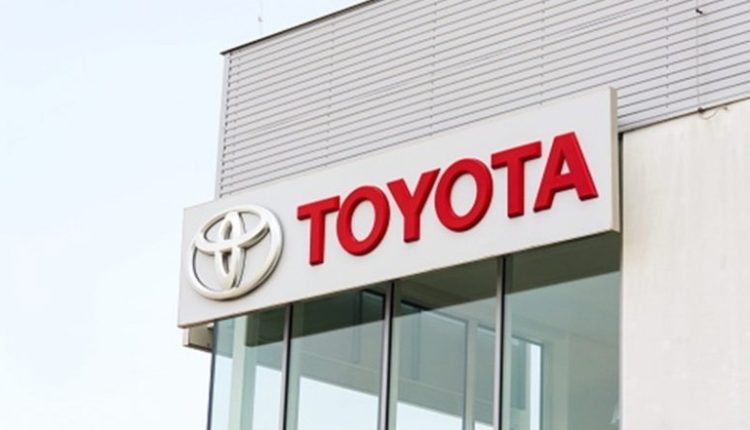Hydrogen-Powered Toyota Corolla Race Car Introduced As Auto Racing Makes Its Shift Away From Fossil Fuel Guzzlers
Oyama (Japan), Jun 1 : In a sprawling circuit near Mount Fuji, a humble Corolla running on liquid hydrogen has made its racing debut, part of a move to bring the futuristic technology into the racing world and to demonstrate Toyota’s resolve to develop green vehicles.
Toyota Chairman Akio Toyoda, resplendent in a fire-resistant racing uniform, was all smiles as he prepared to buzz around the circuit in the hydrogen-fuelled Corolla.
“This is a world first for a liquid hydrogen car to race. We hope it will offer another option in the fight against global warming. To bring everyone smiles, I want to go one lap, even one second, more,” said Toyoda, a former CEO of Toyota, grandson of the automaker’s founder and a licensed race driver himself. Toyota India Reports Highest-Ever Monthly Sales in May 2023 Clocking at 20,410 Units.
The hydrogen Corolla race car won’t be turning up at your dealer anytime soon. The Super Taikyu 24-hour race at Fuji Speedway was just a test for the technology, Toyota officials said. Unlike electric vehicles, it has a combustion engine, but it burns liquid hydrogen instead of gasoline.
Japanese automaker Toyota Motor Corp., which sells about 10 million vehicles a year, has fallen behind in the global shift to battery-powered EVs, but it’s been banking on hydrogen as a potentially carbon-neutral solution for years.
Experts say hydrogen holds great potential. But so far, much of hydrogen, including what’s used to fuel the Corolla racing car, is made using fossil fuels such as natural gas. Cars Launches in India in June 2023: From Honda Elevate to the Return of the Iconic Mercedes-AMG SL55, Checkout These Important Upcoming Car Debut & Launches.
Soaring fuel prices and concerns over global warming have added urgency to the search for alternative energy sources especially in Japan, which imports practically all its oil. Auto racing has been moving to leave its growling gas-guzzlers behind. Toyota rival Honda Motor Co. recently said it’s returning to Formula One racing, saying new regulations are an opportunity for research on new technologies. Other automakers, including General Motors Co., have made similar commitments.
At last week’s event, Pierre Fillon, president of the Automobile Club de l’Ouest, which organizes Le Mans, announced that 24 Hours of Le Mans, the world’s most famous endurance race, will be open to hydrogen-powered cars using both fuel cells and combustion engines starting in 2026.
“Hydrogen for me is a very interesting solution for the future,” Fillon told reporters. “We have to move for mobility to zero emissions. This is very important for our planet and our children.”
Toyota Chief Executive Koji Sato said he hoped to make an announcement soon about Toyota’s participation in Le Mans. The discussion on green-energy solutions has just begun, said John Heywood, a professor emeritus and automotive engine expert at MIT, noting that EVs also have drawbacks such as the need for critical materials often obtained in environmentally or ethically damaging circumstances.
“There is nothing ungreen’ about the internal combustion engine. It’s the fuel that it uses that matters,” Heywood said. The hydrogen used for Toyota’s race car is made at a coal gasification plant in Australia and is delivered by Iwatani Corp., a Japanese energy company, as part of a Japanese government-backed project to promote use of hydrogen for a variety of industries, including those using fossil fuels.
Green hydrogen is created when renewable energy sources power an electrical current that runs through water, separating its hydrogen and oxygen molecules through electrolysis. The process doesn’t produce planet-warming carbon dioxide, but less than 0.1% of global hydrogen production is currently created in this way, according to the IEA.
Critics say it might be better to just use that renewable energy, than use it to make hydrogen. But proponents of hydrogen say even those made from natural gas can be ecological sound when carbon emissions are trapped and buried underground.
Sato acknowledged the challenge. “What we need to do first is to create an environment for using hydrogen. For hydrogen use to become widespread, that environment must be solid, and it’s important the cycle of that system is working in all steps, including transporting it and making it,” he told reporters on the sidelines of the race.
There are other pitfalls apart from the green-ness of hydrogen’s credentials.
In March, a Toyota vehicle fuelled by liquid hydrogen caught on fire during a test run for a race at the Suzuka circuit, which hosts the Formula One Grand Prix and other races.
Hydrogen leaked from a pipe loosened by the vehicle’s vibrations and a leak sensor worked properly, shutting off the hydrogen in less than a tenth of a second. No one was hurt, the cabin was protected, and the fire was contained, according to Toyota.
Of the dozens of cars taking part in the Fuji Speedway 24-hour race, Toyota’s No. 32 Corolla was destined to lose. Refuelling and checks in the pit so crucial to racing took several minutes, an eternity in a race where contestants are fighting for seconds.
Still, the debut of liquid hydrogen in racing may be one small step forward, said Tomoya Takahashi, president of Toyota’s Gazoo Racing Co.
“This is about building for the future. Electric cars are not the only answer, and the internal combustion engine holds potential,” he said.


